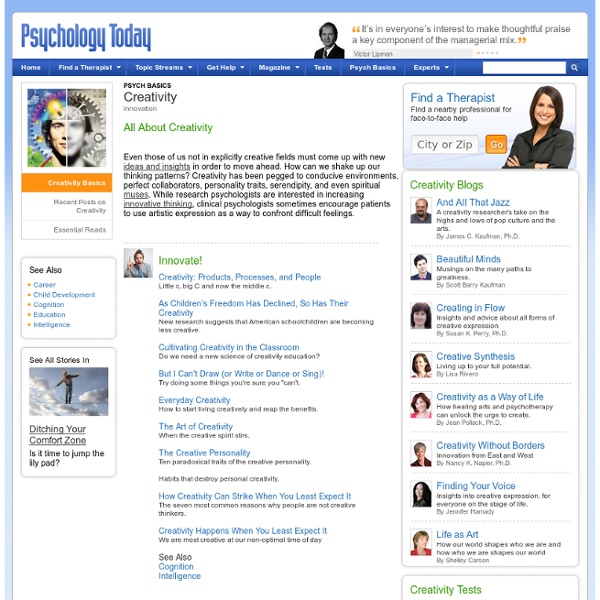Creativity

Creativity-Portal.com - Creativity Coaching, Writing Prompts, Humor, Play, Art, Crafts, Projects
Where creativity goes to school - art & design school offers design, media arts, culinary arts, fashion programs in 35 locations.
Creativity
Creativity is a phenomenon whereby something new and somehow valuable is formed, such as an idea, a scientific theory, an invention, a literary work, a painting, a musical composition, a joke, etc. Scholarly interest in creativity involves many definitions and concepts pertaining to a number of disciplines: psychology, cognitive science, education, philosophy (particularly philosophy of science), technology, theology, sociology, linguistics, business studies, songwriting, and economics, covering the relations between creativity and general intelligence, mental and neurological processes, personality type and creative ability, creativity and mental health; the potential for fostering creativity through education and training, especially as augmented by technology; and the application of creative resources to improve the effectiveness of teaching and learning. Definition[edit] Aspects[edit] Etymology[edit] History of the concept[edit] Ancient views[edit] The Enlightenment and after[edit] J. J.
InstantShift | Web Designers and Developers Daily Resource.
Related:
Related:



